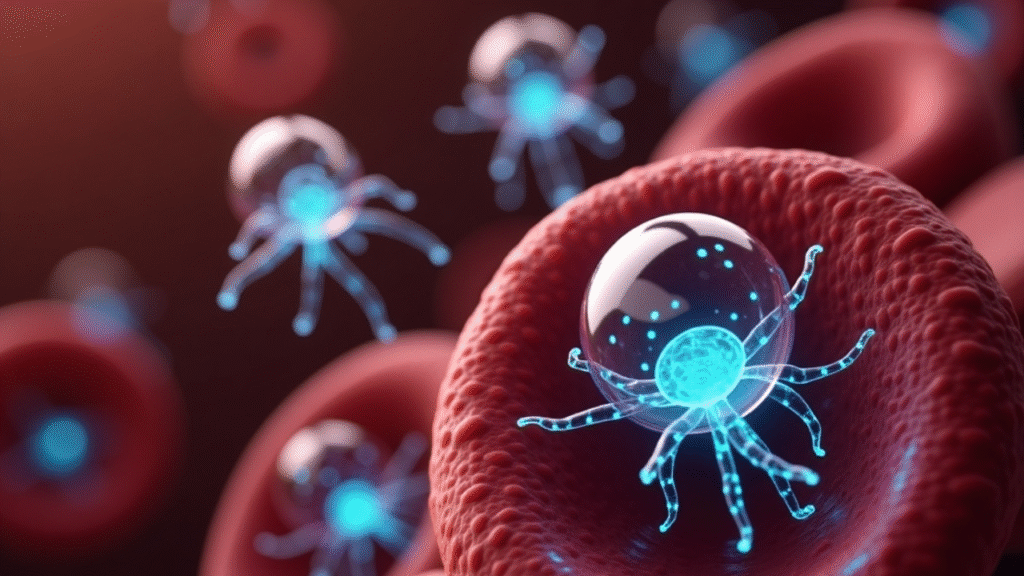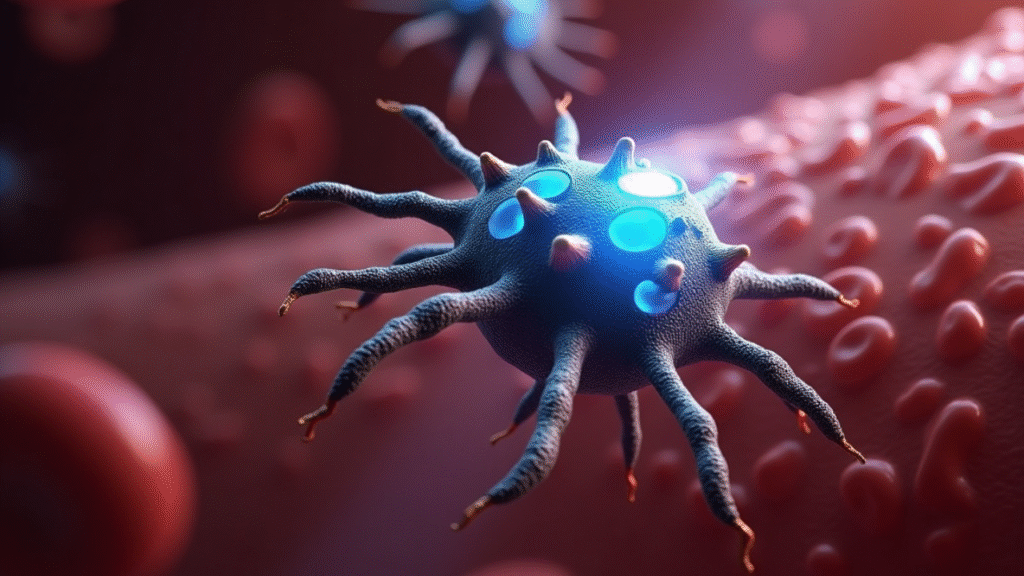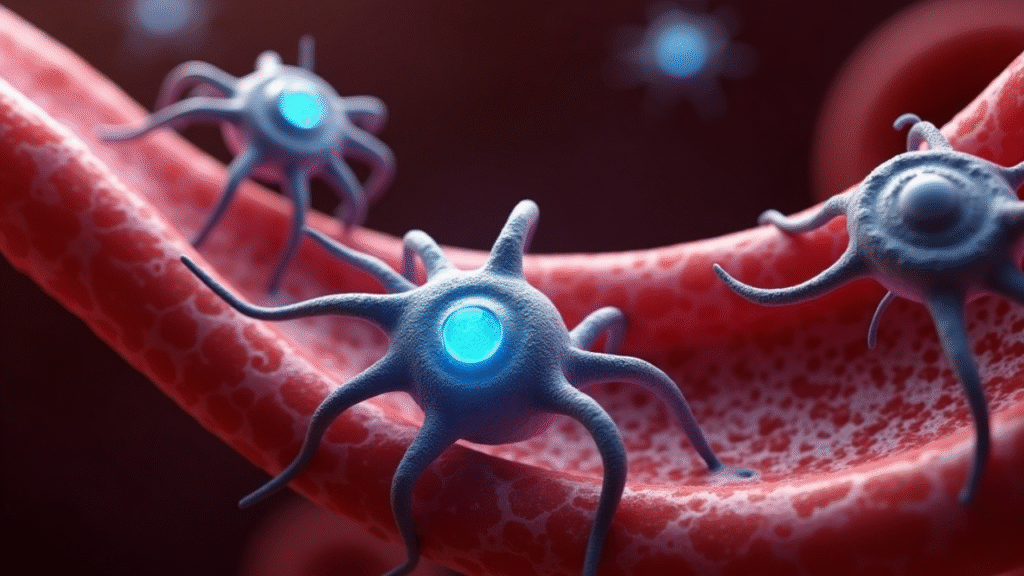Introduction
For decades, nanorobots in medicine sounded like pure science fiction—tiny machines swimming inside the human body, diagnosing illnesses, repairing cells, or delivering life-saving drugs with pinpoint accuracy. Today, this futuristic vision is edging closer to reality. With advances in nanotechnology, robotics, and biotechnology, nanorobots—also called nanobots or medical nanorobots—are emerging as one of the most exciting frontiers in healthcare innovation.
From cancer treatment and targeted drug delivery to minimally invasive surgery and early disease detection, nanorobots have the potential to transform medicine as we know it.
What are Nanorobots in Medicine?
Nanorobots are extremely small devices—often on the scale of nanometers to micrometers—designed to interact with biological systems at the cellular or molecular level. They are built using principles of nanotechnology, and in medicine, they can perform highly precise tasks such as:
- Navigating through the bloodstream
- Identifying diseased cells
- Releasing therapeutic drugs only where needed
- Repairing tissues at the cellular scale
Unlike conventional treatments that often affect healthy tissues, nanorobots in medicine promise personalized, targeted, and minimally invasive healthcare solutions.

Key Applications of Nanorobots in Medicine
1. Targeted Drug Delivery
One of the biggest breakthroughs in nanomedicine is drug delivery nanorobots. Instead of flooding the entire body with chemicals (like chemotherapy), nanorobots can deliver drugs directly to affected cells.
a) Cancer treatment nanotechnology: Nanorobots can release chemotherapy drugs only inside cancer cells, reducing harmful side effects like nausea, hair loss, and organ damage.
b) Smart drug carriers: They can be programmed to respond to pH changes, temperature, or biochemical signals within the body.
2. Cancer Detection and Treatment
Nanorobots are poised to change the way cancer is diagnosed and treated.
a) Early detection: Medical nanorobots can circulate in the bloodstream and identify cancer biomarkers long before symptoms appear.
b) Precision therapy: They can selectively target tumor cells, leaving healthy tissues unharmed.
This approach could significantly improve survival rates while minimizing the toxic effects of traditional therapies.
3. Minimally Invasive Surgery
Imagine a world where surgeries don’t require scalpels or large incisions. Nanorobots could:
- Repair tissues or organs at the cellular level
- Clear blocked arteries
- Break down harmful blood clots
- Perform microsurgeries inside delicate organs like the brain or eye
This would not only shorten recovery times but also reduce risks associated with conventional surgery.
4. Real-Time Disease Monitoring and Diagnostics
Nanorobots can function as tiny biosensors inside the body. They can continuously monitor vital signs, glucose levels, or disease markers and send real-time data to doctors.
- Diabetic patients could benefit from continuous glucose monitoring nanobots.
- Heart patients might have nanobots detecting early signs of a heart attack.
- Cancer patients could use them for ongoing tumor surveillance.
This kind of digital health integration with nanotechnology could revolutionize preventive medicine.

5. Antimicrobial Nanorobots
With rising antibiotic resistance, antimicrobial nanobots offer new hope. They can directly attack bacterial cells, disrupt biofilms, or deliver antimicrobial drugs where needed—helping fight superbugs that no longer respond to conventional antibiotics.
Benefits of Nanorobots in Medicine
- Precision: Highly targeted treatments reduce side effects.
- Early detection: Nanobots can identify diseases at their molecular origin.
- Faster recovery: Minimally invasive surgeries improve healing time.
- Personalized treatment: Therapies can be tailored to each patient’s unique biology.
- Innovation in chronic care: Long-term disease management becomes more efficient.
Challenges and Limitations
While the promise is huge, nanorobots in medicine also face challenges:
- Manufacturing complexity: Creating stable, functional nanorobots at scale is difficult and costly.
- Biocompatibility: Nanobots must be safe, non-toxic, and not trigger immune responses.
- Regulation and ethics: How do we control, test, and approve nanobots for medical use?
- Data privacy: Nanobots collecting real-time health data raise cybersecurity concerns.
Future Outlook: From Imagination to Innovation
The global nanomedicine market is growing rapidly, projected to surpass $400 billion by 2030, with nanorobotics playing a central role. Future possibilities include:
- Nanorobot-assisted organ repair
- AI-powered smart nanobots that make decisions inside the body
- Self-replicating nanorobots for large-scale tissue engineering
- Space medicine applications where nanobots keep astronauts healthy
As research accelerates, what once belonged to science fiction is moving into mainstream science. In the next decade, nanorobots in medicine may redefine healthcare—making treatments more efficient, personalized, and life-saving.

Conclusion
Nanorobots in medicine represent a transformative leap in healthcare innovation. From drug delivery and cancer therapy to surgery and diagnostics, these microscopic machines could reshape how diseases are detected, treated, and prevented. While challenges remain in safety, regulation, and large-scale production, the momentum is undeniable.
The journey of nanorobots—from imagination to innovation—is well underway, and the next wave of medical breakthroughs may very well come from machines smaller than a cell but smarter than ever imagined.






